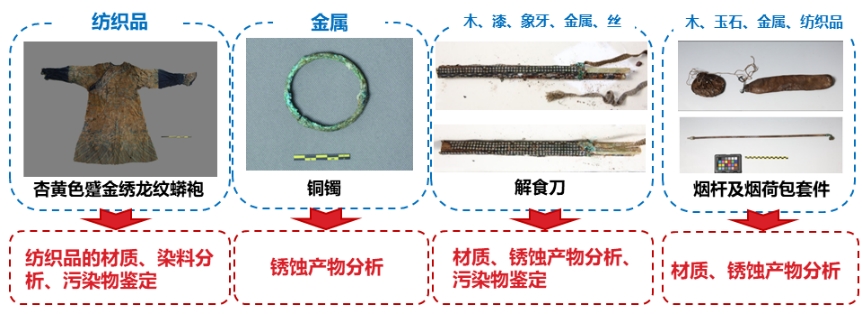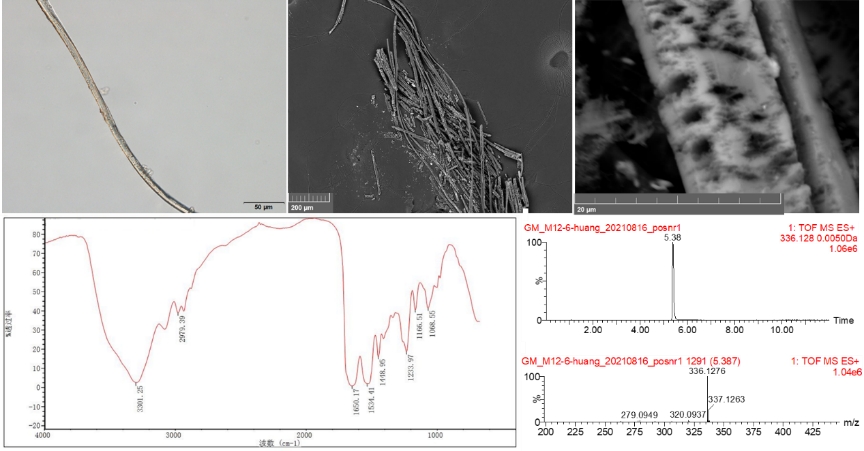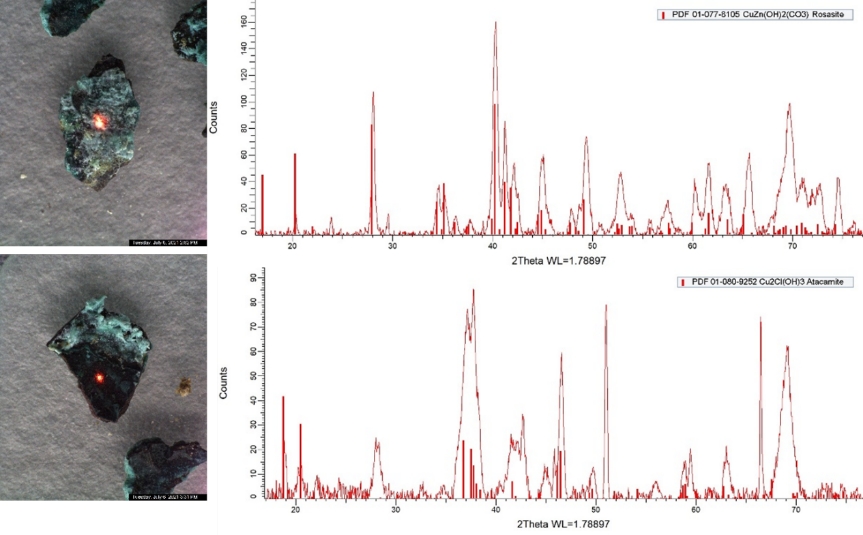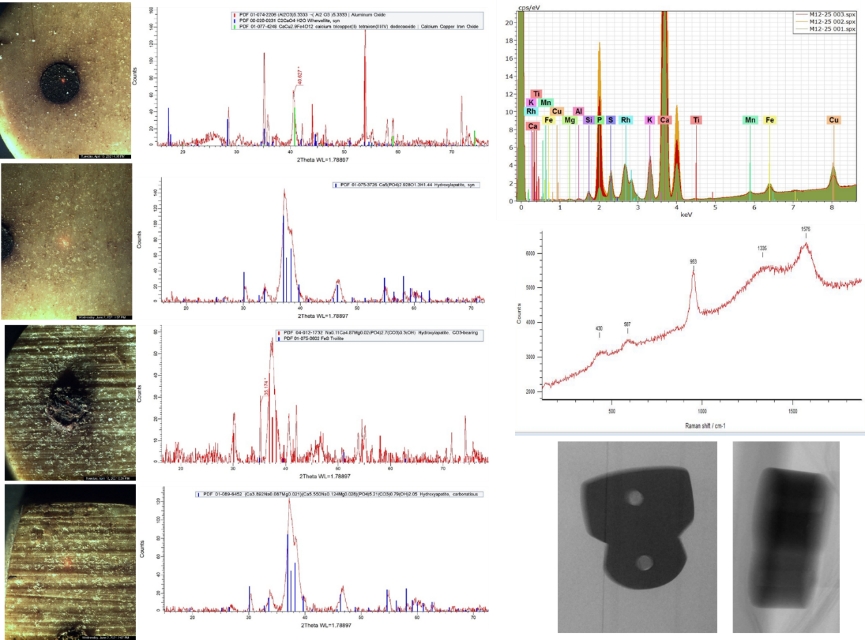Barkol Kazakh Autonomous County in Xinjiang was a strategic point when the Qing government advanced on Xinjiang. The area has preserved a large number of graves and military facilities from the Qing Dynasty, which have borne witness to how the Qing government consolidated its territory. Scientific analysis of the excavated artefacts would facilitate research on the Qing government’s management, trade and clothing and culture in the area.
The research subjects of this project were textile artefacts excavated from East Tuanjie Road in Barkol Kazakh Autonomous County. The excavated items included robes, trousers, hats, shoes, perfume pouches, accessories, pipes and bedding, which were poorly preserved. The textile artefacts are severely rotted and the decorative knives have also corroded and were included in the scientific analysis of different composite materials (image 1).

Image 1. Analysis objectives of Qing-Dynasty clothing and artefacts excavated from the tombs on East Tuanjie Road in Xinjiang’s Barkol Kazakh Autonomous County
In the analysis of excavated textiles, optical microscopes, scanning electron microscopes and infrared spectrometers were used to observe the shapes and identify the textiles. Meanwhile, the use of ultra-performance liquid chromatography-mass spectrometry qualitatively analysed the dyes used on the textiles (image 2). It is discovered that the excavated textiles are mostly made of silk, except for the socks, which are made of hemp. They are, however, all severely rotted. Meanwhile, cork-tree and indigo dyes were detected in all green, blue and yellow textiles.

Image 2. Excavated textiles’ fibre identification, shape observation and dye analysis.
Regarding the scientific analysis of the excavated metal artefacts, phase analysis was conducted on the corrosion using chiefly micro-X-ray fluorescence (μ-XRF), micro X-ray diffraction (μ-XRD) and Raman spectroscopy. Patina such as copper zinc carbonate hydroxide (CuZn(OH)2CO3) and copper oxychloride (Cu2Cl(OH)3) (image 3) and rust such as ferric oxyhydroxide (α-FeO(OH) and β- FeO(OH)) were determined.

Image 3. Phase analysis of the rust on the excavated metal.
The scientific analysis of artefacts such as decorative knives with composite materials generally relied on technologies such as μ-XRF, μ-XRD, infrared spectrometers, pyrolysis-gas chromatography-mass spectrometry, Raman spectroscopy, scanning electron microscopy / energy dispersive spectroscopy and X-ray imaging to conduct phase and structural analysis of the corrosion, superficial pollutants, paint films and fragments and guards (image 4).

Image 4. Phase and structural analysis of the excavated decorative knife.
In summary, systematic scientific analysis has been performed on the deterioration, pollutants and production techniques of the Qing-Dynasty clothing excavated from the tombs on East Tuanjie Road in Barkol Kazakh Autonomous County. The results will provide scientific support for the subsequent preservation and conservation.







